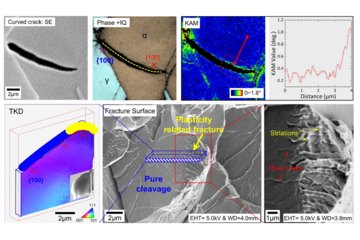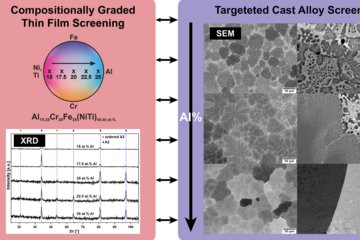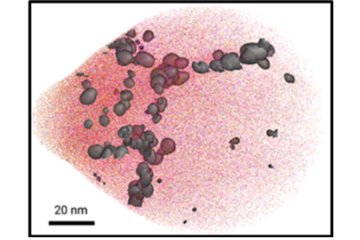All genres
1.
Journal Article
In situ investigation of corrosion localised at the buried interface between metal and conducting polymer based composite coatings. Electrochimica Acta 54 (25), pp. 6075 - 6081 (2009)
2.
Journal Article
Conducting polymers for corrosion protection: What makes the difference between failure and success? Electrochimica Acta 53 (3 SPEC. ISS.), pp. 1301 - 1314 (2007)
3.
Journal Article
Potential control under thin aqueous layers using a Kelvin Probe. Corrosion Science 49 (4), pp. 2021 - 2036 (2007)
4.
Journal Article
Conducting polymers for corrosion protection: A critical view. Zeitschrift für physikalische Chemie 219 (11), pp. 1547 - 1559 (2005)
5.
Talk
Long-range ion transport properties of conducting-polymers. 59th Annual Meeting of the International Society of Electrochemistry, Sevilla, Spain (2008)
6.
Talk
Role of Locallized Protection for the Performance of Conducting Polymer Based Composite Coatings. 212th ECS Meeting, Washington, D.C., USA (2007)
7.
Talk
Mechanism of corrosion protection by conducting polymers. 6th International Symposium on Electrochemical Micro & Nanosystem Technologies, Bonn, Germany (2006)
8.
Talk
Mechanism of corrosion protection by conducting polymers. 57th Annual Meeting of the International Society of Electrochemistry, Edinburgh, UK (2006)
9.
Talk
Mechanism of corrosion protection by conducting polymers. 209th Meeting of The Electrochemical Society, Denver, CO, USA (2006)
10.
Talk
Conducting polymer coatings for corrosion protection: Pros and cons. ISE Annual Meeting, Thessaloniki, Greece (2004)
11.
Talk
Leitfähige Polymere für den Korrosionsschutz: Chancen and Risiken. DGO (GDCh) Jahrestagung, Graz, Austria (2004)
12.
Poster
Conducting polymer coatings for corrosion protection: Pros and cons. Gordon Research Conference on Aqueous Corrosion, New London, NH, USA (2004)
13.
Thesis - PhD
Conductive polymers for corrosion protection: A critical investigation. Dissertation, Ruhr-Universität-Bochum, Fakultät für Chemie, Bochum, Germany (2009)











